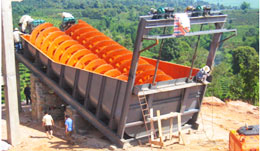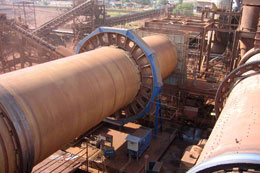-
Sand Making Crusher
- PCL-Vertical Shaft Impact Crusher
- SBM Hydraulic VSI Crusher
- VSI5X Series Impact Crusher
Kaolin grinding machine
Kaolin introduction

Kaolin and the clay mineral kaolinite are natural components of the soil and occur widely in ambient air as floating dust. Kaolinite is formed mainly by decomposition of feldspars (potassium feldspars), granite, and aluminium silicates. It is also not uncommon to find kaolin deposited together with other minerals (illite, bentonite). The process of kaolin formation is called kaolinizatio
Kaolin grinding processing

If kaolin minerals are ground, the crystals cleave and fracture and then split into fine crystals that are considered unit crystallites and that promptly reaggregate. The assemblages of the original kaolin crystallites produced through grinding disintegrate partially into allophane or gel-like substances, These substances and crystalline particles promptly reaggregate.
With grinding, the structure of the crystalline part of the reaggregated particle slowly becomes disordered. With increase in time of grinding and in quantity of amorphous material, the reaggregated particles of disordered kaolin and amorphous substance become disk-shaped.
At a certain point in the grinding time corresponding to the maximum point on the base exchange capacity curve and the inflection point on the density curve, the particle becomes almost uniformly spherical. The structure, with continued grinding, changes finally into a structure similar to the perfectly amorphous structure of alumina-silica mixed gel and its particle size increases irregularly.
The change of structure due to dry grinding is the same in both kaolinite and halloysite, except that less grinding is required for halloysite. Therefore the effect of grinding on kaolin minerals is related to the structural perfection of the original kaolin mineral. This fact has been ascertained by the study of the all-over grinding effect of kaolin mineral.
if you need any kaolin grinding machines(like ball mill) , please contact us.
- Limestone Crusher
- Barite Crusher
- Granite Crusher
- Kaolinite Crusher
- Calcite Crushing
- Tombarthite Crusher Mill
- Bentonite Grinding Plant
- Basalt Ore Crusher
- Lignite Crusher Mill
- Silica Ore Crusher
- Tin Ore Mine
- Lead and Zinc Ore Crusher
- Ochre Crusher Mill
- Garnet Crusher
- Mica Crusher
- Asbestos Crusher
- Manganese Ore Crusher
- Talc Crusher Mill
- Feldspar Crusher
- Iron Ores Crusher
- Dolomite Crusher
- Quartz Crusher
- Gypsum Crusher
- Calcium Carbonate Grinding
- About Us
- |
- Service
- |
- News & Events
- |
- Contact Us
- |
- Resources
- |
- Showroom
Aggregate Crusher
Artificial Sand Making
Ballast Crushing Machine
Basalt Stone Crusher
Barite Mine Process
Beneficiation Plant
Bentonite Crusher
Bentonite Milling
Calcium Carbonate Crusher
Calcium Carbonate Grinding
Cement Grinding
Concrete Crusher
Coal Crusher
Copper Crusher
Cement Mill
Chrome Mining Process
Copper ore Beneficiation
Coal Processing
Coal Pulvarizer
Feldspar Crushing
Feldspar Grinding
Flotation Machine
Gold Crusher
Gold Mine Equipment
Gold Processing Machinery
Granite Crusher
Granite Crushing Machine
Granite Quarry Equipment
Gypsum Crusher
Gypsum Mining
Gypsum Powder Production
Iron Ore Beneficiation
Iron Ore Crusher
Kaolin Processing Plant
Limestone Crusher
Silica Sand Crusher
Iron Ore Mining Equipment
Cement Production Line
Talc Production Line
Quartz Crushing Machine
Limestone Mining Process
Manganese Benificietion
























